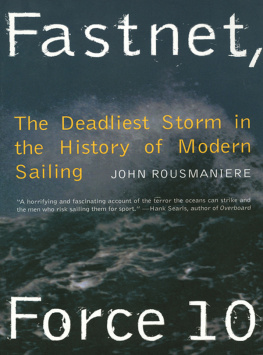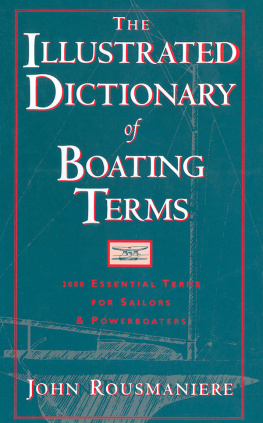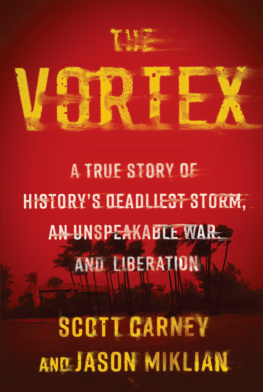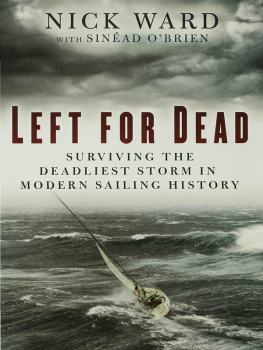Rousmaniere - Fastnet, force 10
Here you can read online Rousmaniere - Fastnet, force 10 full text of the book (entire story) in english for free. Download pdf and epub, get meaning, cover and reviews about this ebook. City: New York, year: 2000;2013, publisher: W. W. Norton & Company, genre: History. Description of the work, (preface) as well as reviews are available. Best literature library LitArk.com created for fans of good reading and offers a wide selection of genres:
Romance novel
Science fiction
Adventure
Detective
Science
History
Home and family
Prose
Art
Politics
Computer
Non-fiction
Religion
Business
Children
Humor
Choose a favorite category and find really read worthwhile books. Enjoy immersion in the world of imagination, feel the emotions of the characters or learn something new for yourself, make an fascinating discovery.
- Book:Fastnet, force 10
- Author:
- Publisher:W. W. Norton & Company
- Genre:
- Year:2000;2013
- City:New York
- Rating:5 / 5
- Favourites:Add to favourites
- Your mark:
- 100
- 1
- 2
- 3
- 4
- 5
Fastnet, force 10: summary, description and annotation
We offer to read an annotation, description, summary or preface (depends on what the author of the book "Fastnet, force 10" wrote himself). If you haven't found the necessary information about the book — write in the comments, we will try to find it.
Fastnet, force 10 — read online for free the complete book (whole text) full work
Below is the text of the book, divided by pages. System saving the place of the last page read, allows you to conveniently read the book "Fastnet, force 10" online for free, without having to search again every time where you left off. Put a bookmark, and you can go to the page where you finished reading at any time.
Font size:
Interval:
Bookmark:
T HE HELP AND ENCOURAGEMENT given me while I conducted research for and wrote this book might appear to be the result of an international conspiracy. That I sailed in the Fastnet race is due to Eric Swenson, who asked me to join him in Toscanaan American boat named after a region in Italy. Eric eventually became a source of information, a sounding board for ideas, and my American editor.
The idea of writing a book on the gale and the havoc it wrought was first suggested to me by Sir Peter Johnson, an Englishman who, as the seventh baronet of New York, has American blood in his veins. Peter sailed in the race, and served as a research assistant and my English editor.
I conducted research in England during three trips in August, September, and November, 1979a total of seven weeks in London, Essex, Hampshire, Devon, Cornwall, and the Isles of Scilly. My hostesses, who were unfailingly hospitable and tolerant of my ridiculous schedule, which often included dawn departures and midnight arrivals, were Mrs. Blanche L. Prescott, of Putney Heath, London, and Lady Caroline Johnson, of Lymington, Hampshire. Peter Johnson, his partners, Erroll Bruce and Richard Creagh-Osborne, and the pleasant and efficient staff at Nautical Publishing gave me the freedom of their office and helped me over many logistical hurdles.
I talked with dozens of survivors of the storm, many of whom are named in the text, but I especially would like to thank three men who courageously relived for me their painful experiences in boats that suffered fatalities: Nick Ward, of Grimalkin; Simon Fleming, of Trophy; and Matthew Hunt, of Ariadne. They are three of the bravest men I know. Other veterans of the race who were helpful were John Coote, our navigator in Toscana; Gary Jobson, Jim Mattingly, and Greg Shires, of Tenacious; John Kilroy, of Kialoa; Dave Kilponen and John Marshall, of Aries; Larry Marks, of Morning Cloud; Malin Burnham, of Williwaw; German Frers, Jr., of Acadia; Dave Allen, of Imp; and Chris Bouzaid, of Police Car. Pat Wells and Peter Webster, who were aboard Morningtown and HNLMS Overijssel, provided information about the rescue effort. Mrs. Robert Robie and her family very kindly took time at a difficult moment to talk with me about their husband and father, who was lost from Ariadne.
Matthew Lethbridge, coxswain of the St. Marys lifeboat, gave over most of a day to answer my questions about lifeboat duty, the Isles of Scilly, and his crews service during the Fastnet gale. Brian Jenkins, also of St. Marys, and Toby West, coxswain of the Falmouth lifeboat, also helped this American understand that most English of organizations, the Royal National Life-boat Institution.
The following provided unpublished reports and letters about or photographs of the storm: Alain Catherineau, of Lorelei; John Ellis, of Kate; Major J.K.C. Maclean, of Fluter; George Tinley, of Windswept (whose record was a twenty-page transcript of a telephone conversation with Richard Creagh-Osborne, whom I thank again); Peter Cook, editor of Yachts and Yachting; and John Driscoll, then assistant editor of Yachting World. Major Hall, editor of Yacht Racing/Cruising, and Bill Wallace, of the New York Times, arranged for me to cover the Admirals Cup and the Fastnet race for their publications, thereby providing me with press credentials.
My old friend Eric Olsen appeared in Plymouth at the very moment when I agreed in principle to write this book, and the next day, August 19, he offered me the benefit of his considerable knowledge of boat construction and seamanship during a brainstorming session as we drove along the narrow roads of Cornwall. After we returned to the United States, we spent another fruitful day studying weather maps and tracking the gale, and he later offered several insights into the causes of the calamity in the Western Approaches.
Erroll Bruce, who probably knows more about going to sea in small boats than any other man, read early drafts of the manuscript and was helpful on the subject of the psychological effects of storms on sailors. Ingrid Holford, in Lymington, and David J. Schwab, of the Great Lakes Environmental Research Laboratory at the University of Michigan, provided information about wave formation. Steve Lirakis, of Newport, Rhode Island, provided insights about safety harnesses. Hal Roth and Harvey Loomis gave the final manuscript thorough, helpful readings.
Three public relations offices were helpful. Second Officer Judy Sherwood and Chief Petty Officer Pete Ferris provided photographs, allowed me to interview a helicopter crew, and clarified printed reports during my two visits to the Royal Naval Air Station at Culdrose.
Tim Hunt, press officer at the Southern Rescue Co-ordination Centre at Plymouth, gave me access to his file of clippings and explained the mechanics of the search and rescue services. And the staffs at the London and Poole offices of the Royal National Life-boat Institution supplied information about the lifeboats.
I would like to emphasize that at no time did I receive special assistance from the Royal Ocean Racing Club, which was extremely busy with its ownvery differentstudy of the gale and its effects on the Fastnet race fleet. The report of their inquiry (conducted in partnership with the Royal Yachting Association) was by my side as I was completing the manuscript on December 14, and I have summarized its major findings in . Theirs is a thorough analysis based on questionnaires filled out by over two hundred skippers. This book, on the other hand, is a narrative based on interviews and published material about some seventy yachts and rescue craft. We appear to agree on every important conclusion. Sailors interested in highly technical matters will find the report fascinating; it is available from the Royal Ocean Racing Club, 2 St. Jamess Place, London SW1A INN, or from the United States Yacht Racing Union, P.O. Box 209, Newport, Rhode Island 02840.
Finally, I would like to thank several people who have helped during the four months I worked on this book by providing the perspective that every author needs. Charles Taylor and my friends on Roosevelt Island, New York, helped me to understand some personal reactions I have had to the calamity. My parents provided important housekeeping support and were enthusiastic guinea pigs for various drafts of the manuscript. Ann Marie Cunningham, lately of the Presidential Commission on the Accident at Three Mile Island, in her own way encouraged my attempt to understand and explain an event about which she has unpleasant memories, knowing that my work on this tragedy has been as important to me as her work on another disaster was to her. I hope that the dedication page properly thanks my sons, William Pierce and Dana Starr Rousmaniere, for their patience and encouragement.
J.R.
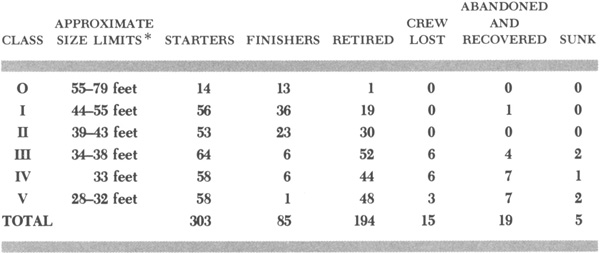
* Boats were assigned to various classes not by their overall length but by their International Offshore Rule ratings, which are determined by a formula involving many speed-producing and speed-inhibiting factors and which are intended to indicate the potential speed of racing boats. When the race is over, the IOR ratings are factored against the boats elapsed times on the course to calculate corrected times, which are then compared to determine the overall standings. Since some large boats may have relatively low ratings and some small boats may have relatively large ratings, the approximate size limits only indicate the size range of the majority of boats in each class. For example, in Class III there were entered several forty-footers and one thirty-footer. The IOR limits for each class are assigned by the Royal Ocean Racing Club at the beginning of each racing season.
Font size:
Interval:
Bookmark:
Similar books «Fastnet, force 10»
Look at similar books to Fastnet, force 10. We have selected literature similar in name and meaning in the hope of providing readers with more options to find new, interesting, not yet read works.
Discussion, reviews of the book Fastnet, force 10 and just readers' own opinions. Leave your comments, write what you think about the work, its meaning or the main characters. Specify what exactly you liked and what you didn't like, and why you think so.

